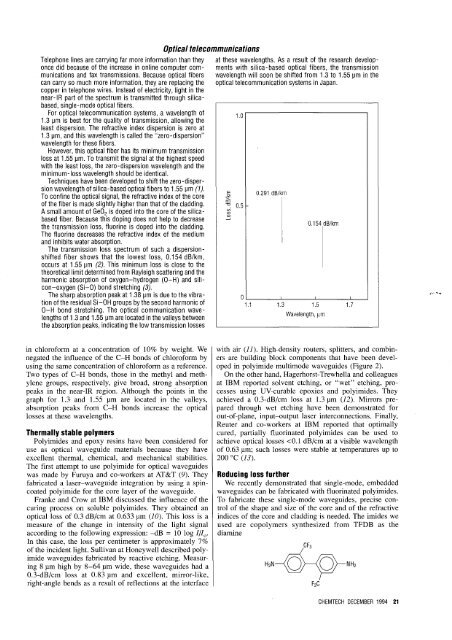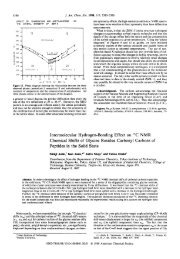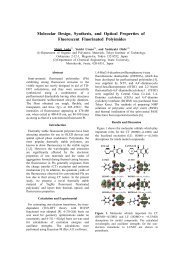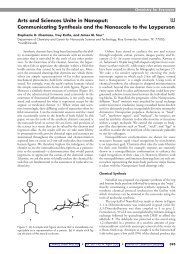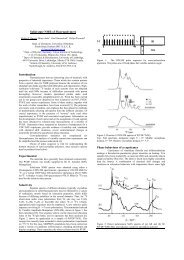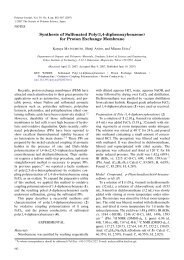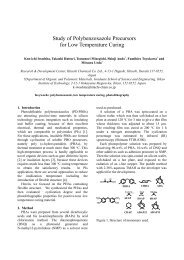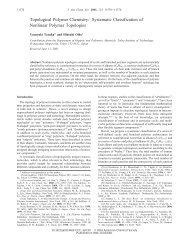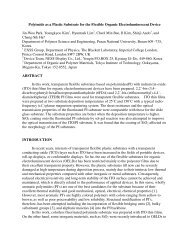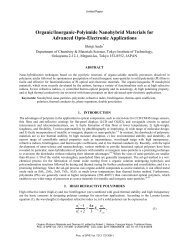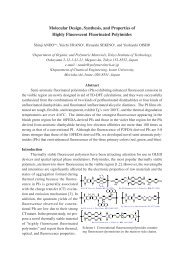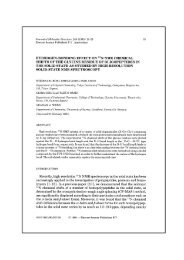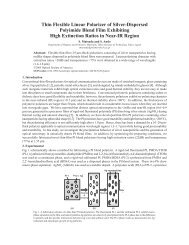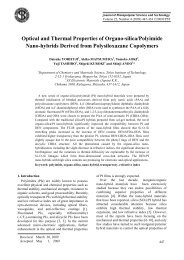Perfluorinated polymers for optical waveguides
Perfluorinated polymers for optical waveguides
Perfluorinated polymers for optical waveguides
Create successful ePaper yourself
Turn your PDF publications into a flip-book with our unique Google optimized e-Paper software.
Telephone lines are carrying far more in<strong>for</strong>mation than they<br />
once did because of the increase in online computer communications<br />
and fax transmissions. Because <strong>optical</strong> fibers<br />
can carry so much more in<strong>for</strong>mation, they are replacing the<br />
copper in telephone wires. Instead of electricity, light in the<br />
near-IR part of the spectrum is transmitted through silicabased,<br />
single- mode <strong>optical</strong> fibers.<br />
For <strong>optical</strong> telecommunication systems, a wavelength of<br />
1.3 11m is best <strong>for</strong> the quality of transmission, allowing the<br />
least dispersion. The refractive index dispersion is zero at<br />
1.3 11m, and this wavelength is called the "zero-dispersion"<br />
wavelength <strong>for</strong> these fibers.<br />
However, this <strong>optical</strong> fiber has its minimum transmission<br />
loss at 1.55 11m. To transmit the signal at the highest speed<br />
with the least loss, the zero-dispersion wavelength and the<br />
minimum-loss wavelength should be identical.<br />
Techniques have been developed to shift the zero-dispersion<br />
wavelength of silica -based <strong>optical</strong> fibers to 1.55 11m (1).<br />
To confine the <strong>optical</strong> signal, the refractive index of the core<br />
of the fiber is made slightly higher than that of the cladding.<br />
A small amount of Ge0 2 is doped into the core of the silicabased<br />
fiber. Because this doping does not help to decrease<br />
the transmission loss, fluorine is doped into the cladding.<br />
The fluorine decreases the refractive index of the medium<br />
and inhibits water absorption.<br />
The transmission loss spectrum of such a dispersionshifted<br />
fiber shows that the lowest loss, 0.154 dB/km,<br />
occurs at 1.55 11m (2). This minimum loss is close to the<br />
theoretical limit determined from Rayleigh scattering and the<br />
harmonic absorption of oxygen-hydrogen (O-H) and silicon-oxygen<br />
(Si-O) bond stretching (3).<br />
The sharp absorption peak at 1.38 11m is due to the vibration<br />
of the residual Si-OH groups by the second harmonic of<br />
O-H bond stretching. The <strong>optical</strong> communication wavelengths<br />
of 1.3 and 1.55 11m are located in the valleys between<br />
the absorption peaks, indicating the low transmission losses<br />
Optical telecommunications<br />
at these wavelengths. As a result of the research developments<br />
with silica-based <strong>optical</strong> fibers, the transmission<br />
wavelength will soon be shifted from 1.3 to 1.55 11m in the<br />
<strong>optical</strong> telecommunication systems in Japan.<br />
E<br />
""" co<br />
1.0<br />
-0 0.5<br />


